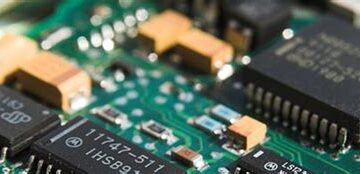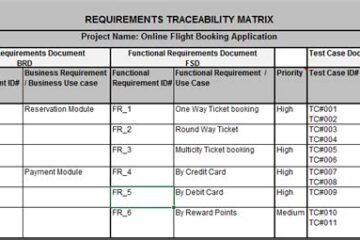What is the PCB Book-to-Bill Ratio?
The PCB Book-to-Bill ratio is a key indicator of the health and growth of the PCB industry. It is calculated by dividing the value of new orders (bookings) by the value of shipped products (billings) over a specific period, typically a month. A ratio above 1.0 indicates that more orders are being placed than products are being shipped, suggesting growth in the industry.
Current PCB Book-to-Bill Ratio
According to recent data from the IPC (Association Connecting Electronics Industries), the North American PCB industry’s Book-to-Bill ratio reached 1.18 in February 2023, the highest level since April 2020. This means that for every $100 worth of PCBs shipped, $118 worth of new orders were received.
| Month | Book-to-Bill Ratio |
|---|---|
| February 2023 | 1.18 |
| January 2023 | 1.12 |
| December 2022 | 1.09 |
| November 2022 | 1.05 |
| October 2022 | 1.02 |
The consistently high Book-to-Bill ratio over the past few months indicates a strong and sustained demand for PCBs.
Factors Contributing to the High PCB Book-to-Bill Ratio
Several factors have contributed to the impressive growth in the PCB industry, as reflected by the high Book-to-Bill ratio:
1. Increased Demand for Electronic Devices
The COVID-19 pandemic has accelerated the adoption of digital technologies, leading to a surge in demand for electronic devices such as laptops, tablets, and smartphones. As PCBs are essential components in these devices, the increased demand has directly impacted the PCB industry.
2. 5G Technology Rollout
The global rollout of 5G networks has created a significant demand for PCBs used in 5G infrastructure and compatible devices. As more countries invest in 5G technology, this demand is expected to continue growing.
3. Automotive Industry Recovery
The automotive industry, a significant consumer of PCBs, has been recovering from the impact of the pandemic. As vehicle production ramps up and the trend towards electric vehicles continues, the demand for PCBs in this sector has increased.
4. Supply Chain Resilience Efforts
The disruptions caused by the pandemic have highlighted the importance of supply chain resilience. Many companies are now looking to diversify their PCB Suppliers and increase inventory levels to mitigate future disruptions, leading to increased orders.

Implications for the PCB Industry
The high PCB Book-to-Bill ratio has several implications for the industry:
1. Capacity Expansion
PCB Manufacturers are likely to invest in expanding their production capacity to meet the growing demand. This may involve adding new production lines, hiring more workers, and upgrading equipment.
2. Longer Lead Times
As demand outpaces supply, lead times for PCB orders may increase. Customers should anticipate longer wait times and plan accordingly.
3. Price Fluctuations
The high demand for PCBs may lead to price increases, particularly if raw material costs rise or if there are supply constraints. However, increased competition and capacity expansion could help stabilize prices over time.
Future Outlook
The PCB industry’s strong performance, as indicated by the high Book-to-Bill ratio, is expected to continue in the near future. Several trends and developments support this outlook:
1. Continued Growth in Key Industries
The industries driving the demand for PCBs, such as consumer electronics, 5G technology, and automotive, are expected to continue growing in the coming years. This growth will likely sustain the high demand for PCBs.
2. Emergence of New Applications
New applications for PCBs are continually emerging, such as in the Internet of Things (IoT), wearable devices, and medical technology. These new applications will create additional demand for PCBs.
3. Technological Advancements
Advancements in PCB technology, such as the development of more advanced materials and manufacturing processes, will enable the production of higher-quality and more complex PCBs. This will open up new opportunities for the industry.
However, the industry also faces some challenges that could impact its growth:
1. Geopolitical Tensions
Trade tensions and geopolitical uncertainties could disrupt supply chains and affect the demand for PCBs. Manufacturers will need to navigate these challenges and adapt their strategies accordingly.
2. Environmental Regulations
Stricter environmental regulations may require PCB manufacturers to invest in more sustainable production processes and materials. While this may increase costs in the short term, it could also create opportunities for innovation and differentiation.
Frequently Asked Questions (FAQ)
-
Q: What is the significance of the PCB Book-to-Bill ratio?
A: The PCB Book-to-Bill ratio is a key indicator of the health and growth of the PCB industry. A ratio above 1.0 indicates that more orders are being placed than products are being shipped, suggesting growth in the industry. -
Q: What factors have contributed to the high PCB Book-to-Bill ratio?
A: The high PCB Book-to-Bill ratio can be attributed to factors such as increased demand for electronic devices, the rollout of 5G technology, the recovery of the automotive industry, and efforts to improve supply chain resilience. -
Q: How might the high PCB Book-to-Bill ratio affect lead times and prices?
A: The high demand for PCBs may result in longer lead times for orders and potential price increases. However, capacity expansion and increased competition could help stabilize prices over time. -
Q: What are some of the new applications driving the demand for PCBs?
A: New applications driving the demand for PCBs include the Internet of Things (IoT), wearable devices, and medical technology. -
Q: What challenges does the PCB industry face in the near future?
A: The PCB industry faces challenges such as geopolitical tensions that could disrupt supply chains and stricter environmental regulations that may require investments in more sustainable production processes and materials.
Conclusion
The PCB industry is experiencing significant growth, as evidenced by the 34-month high in the PCB Book-to-Bill ratio. This growth is driven by factors such as increased demand for electronic devices, the rollout of 5G technology, the recovery of the automotive industry, and efforts to improve supply chain resilience.
While the high demand for PCBs may lead to longer lead times and potential price increases, it also presents opportunities for capacity expansion, innovation, and differentiation. The industry’s future outlook remains positive, with continued growth expected in key industries and the emergence of new applications.
However, the industry must also navigate challenges such as geopolitical tensions and stricter environmental regulations. By adapting to these challenges and seizing new opportunities, the PCB industry can continue its impressive growth trajectory and play a vital role in shaping the future of electronics.



0 Comments